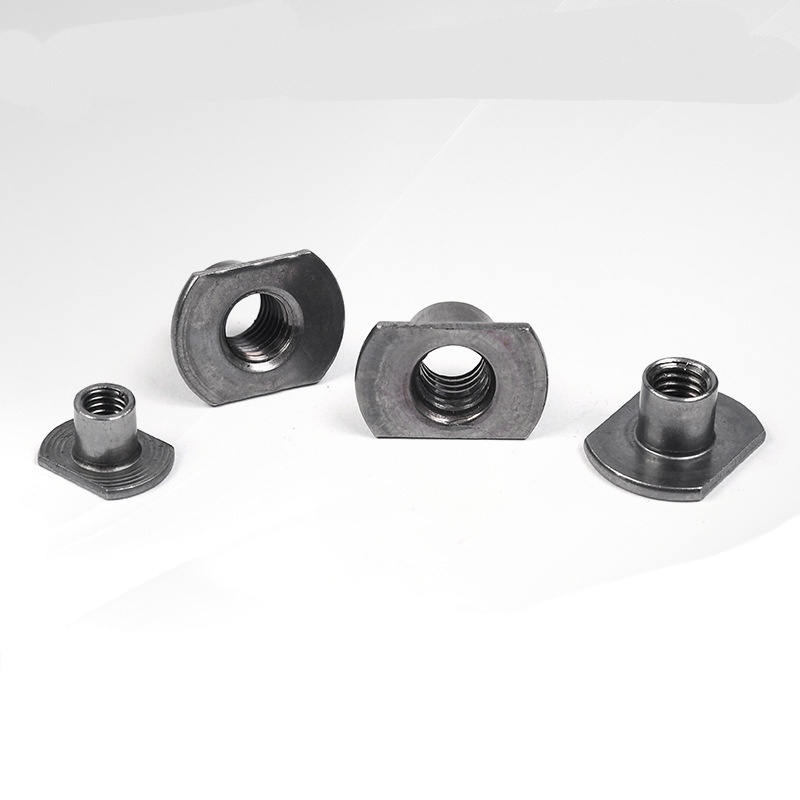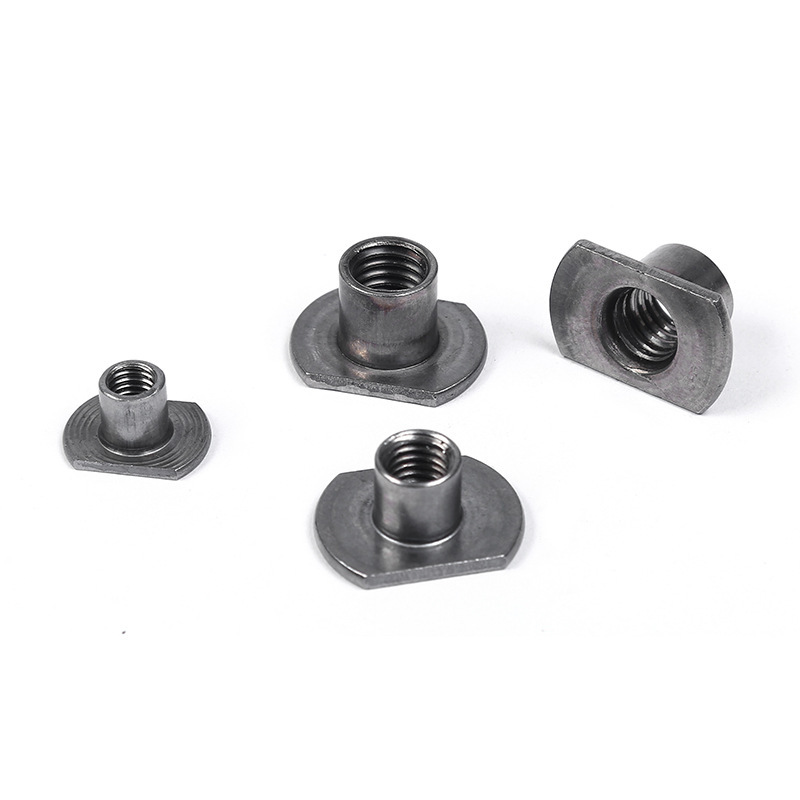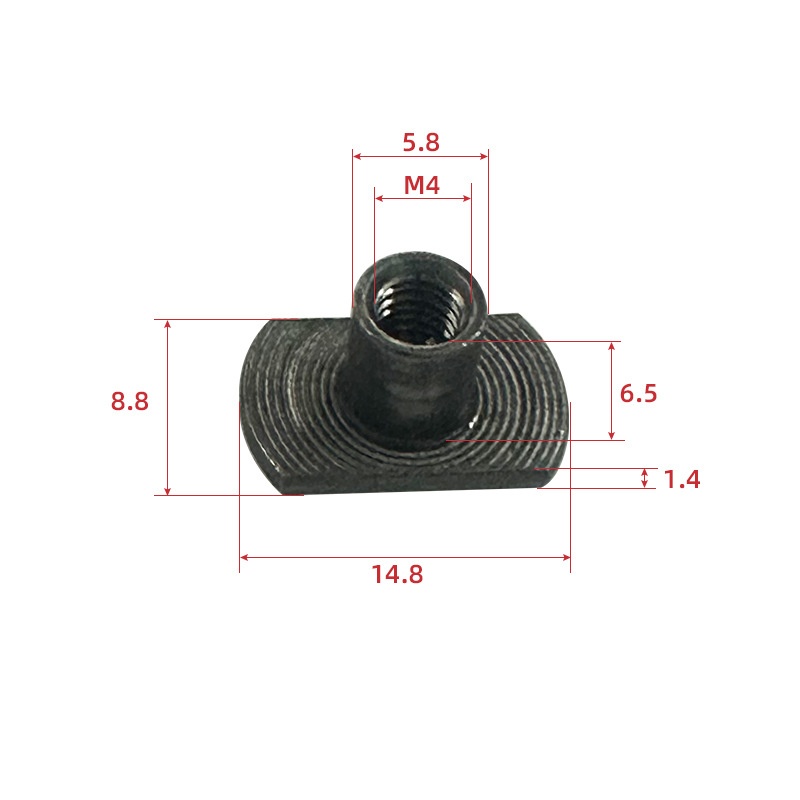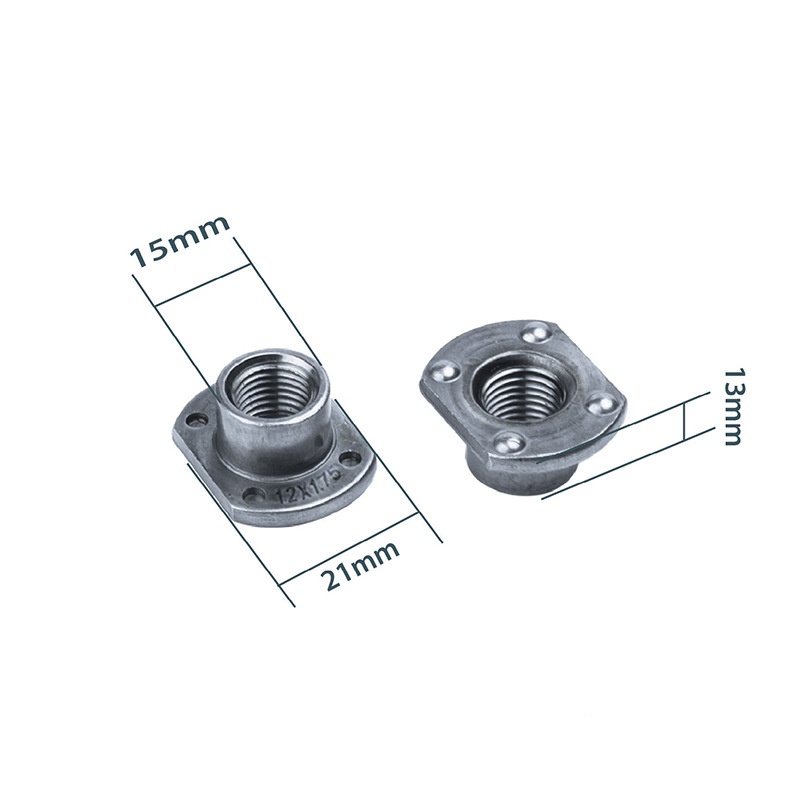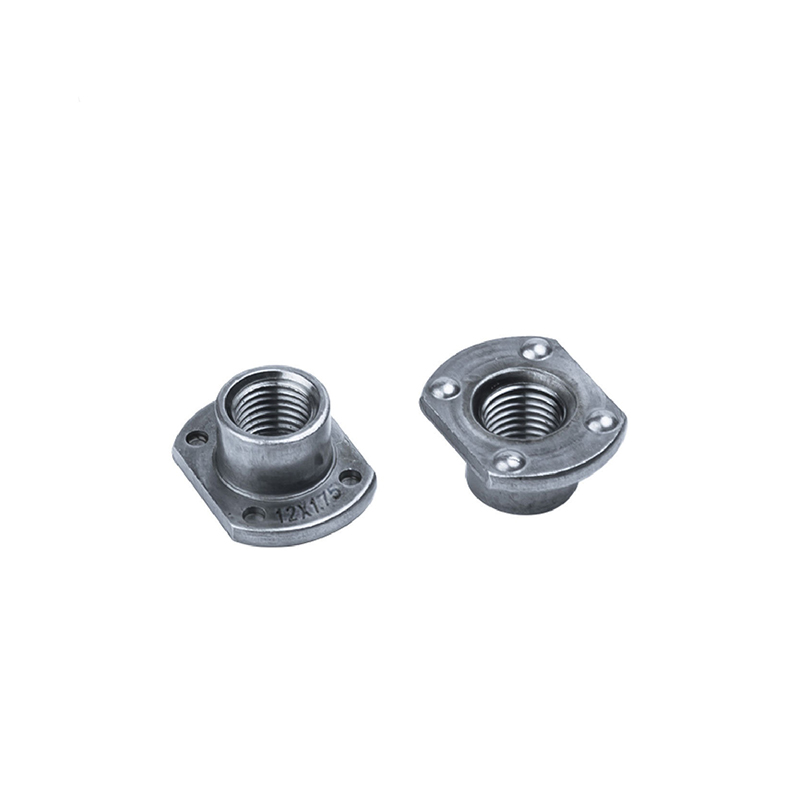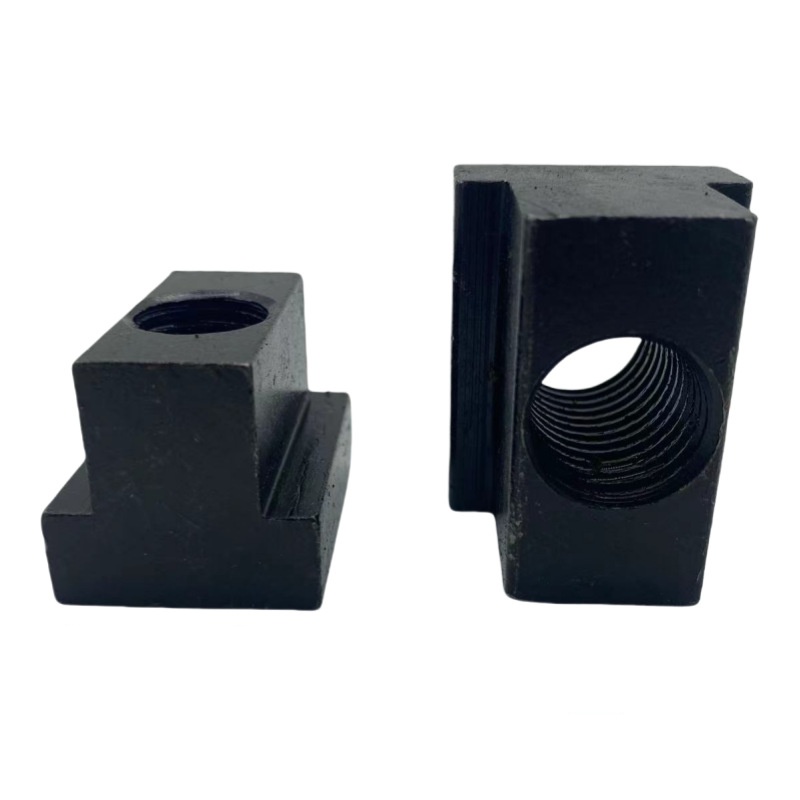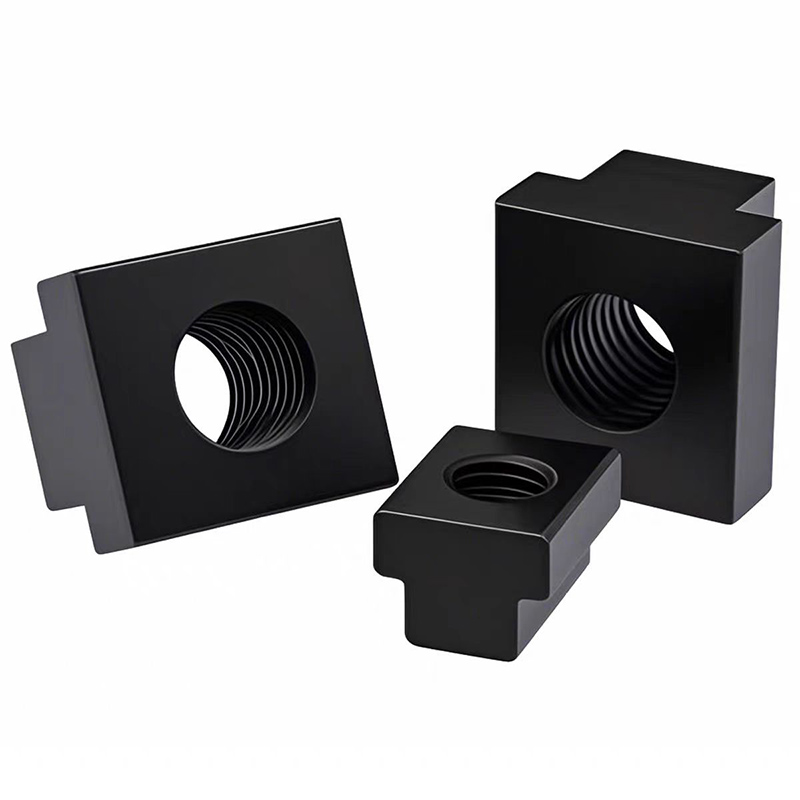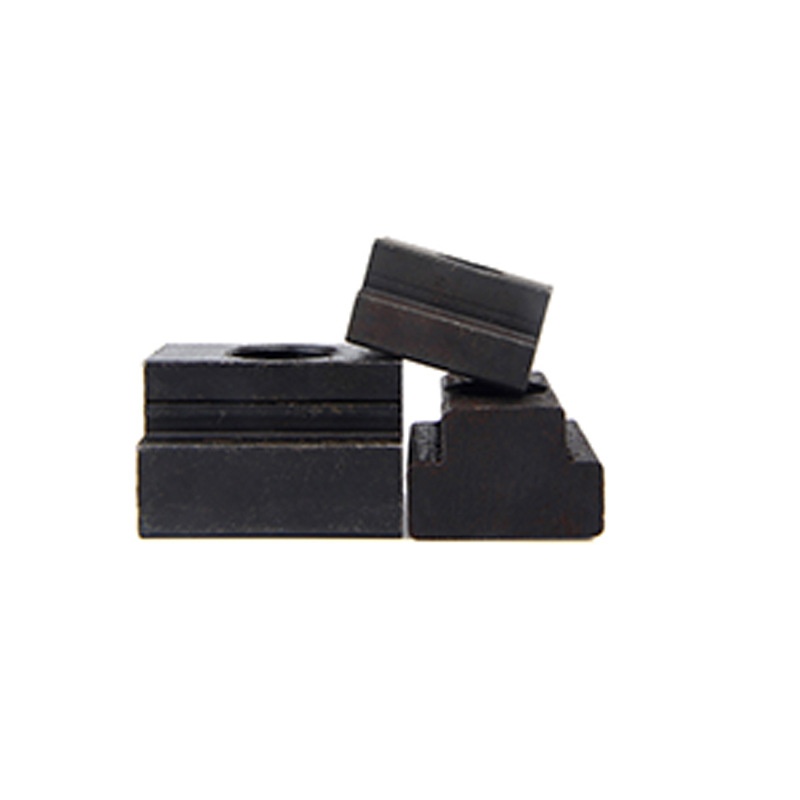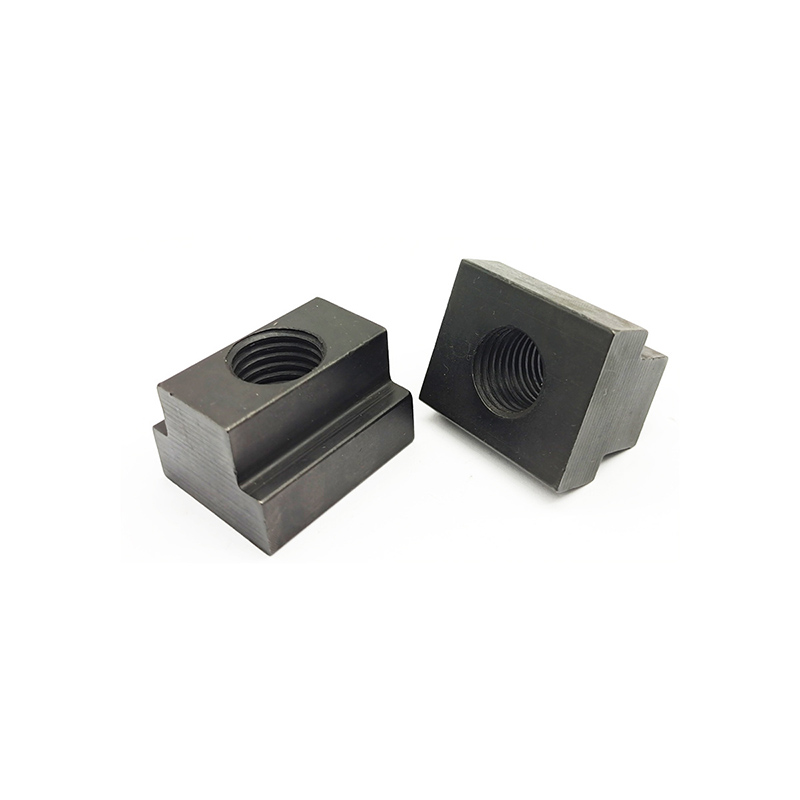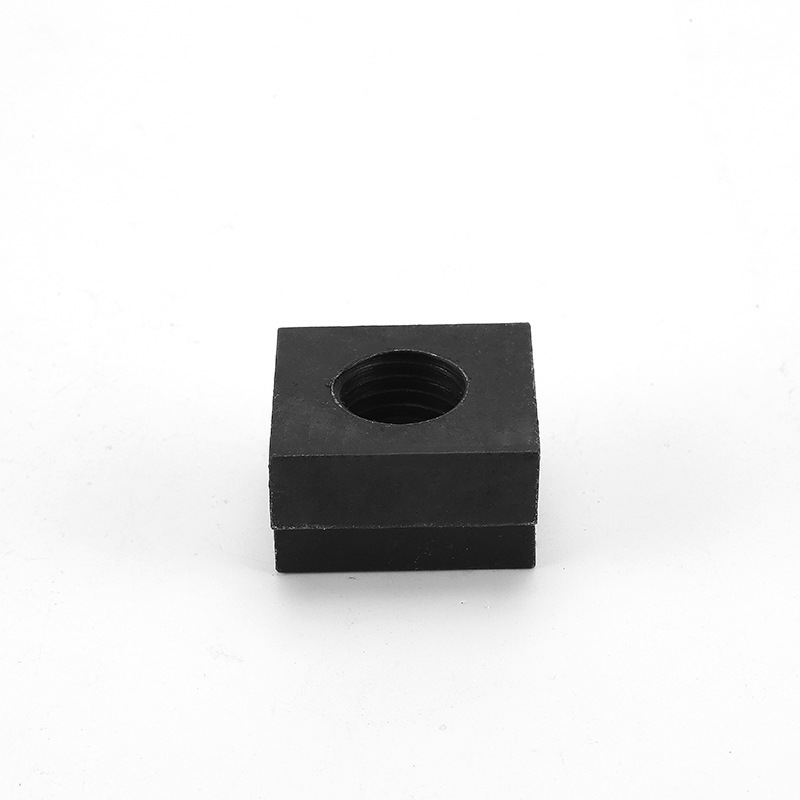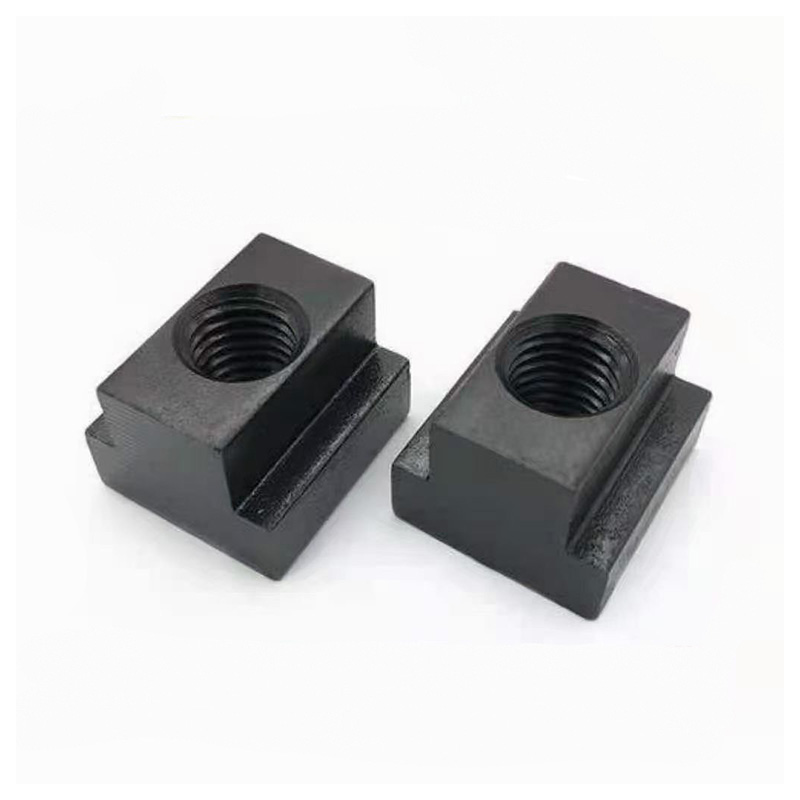Load Stable T Style Weld Nuts
Send Inquiry
Unlike bolts that need you to get to both sides, load stable T style weld nuts only need access from one side—both for welding and then putting in the fasteners. That’s super useful for enclosed parts or box-shaped sections.
Also, the big flange helps seal against the sheet metal. If you place sealant or gaskets on the flange surface before welding, these nuts will help form a tight fitting, leak-proof connection.
| Mon | M4 | M5 | M6 | M8 | M10 | M12 |
| P | 0.7 | 0.8 | 1 | 1︱1.25 | 1.25︱1.5 | 1.5︱1.75 |
| dk max | 20.5 | 20.5 | 23.7 | 23.7 | 31 | 33.2 |
| dk min | 19.5 | 19.5 | 22.3 | 22.3 | 29 | 30.8 |
| s max | 12.25 | 12.25 | 14.3 | 14.3 | 19.4 | 21.5 |
| s min | 11.75 | 11.75 | 13.7 | 13.7 | 18.6 | 20.5 |
| ds max | 5.9 | 6.7 | 8.3 | 10.2 | 13.2 | 15.2 |
| ds min | 5.4 | 6.2 | 7.8 | 9.5 | 12.5 | 14.5 |
| k max | 5.9 | 6.9 | 7.5 | 9 | 10.6 | 11.8 |
| k min | 5.1 | 6.1 | 6.5 | 8 | 9.4 | 10.2 |
| h max | 1.4 | 1.4 | 1.85 | 1.85 | 2.3 | 2.3 |
| h min | 1 | 1 | 1.35 | 1.35 | 1.7 | 1.7 |
| d0 max | 3.25 | 3.25 | 3.25 | 3.25 | 4.05 | 4.05 |
| d0 min | 2.75 | 2.75 | 2.75 | 2.75 | 3.55 | 3.55 |
| d1 max | 15.2 | 15.2 | 17.25 | 17.25 | 22.3 | 24.3 |
| d1 min | 14.8 | 14.8 | 16.75 | 16.75 | 21.7 | 23.7 |
Applicable Scenarios:
The most common and cheapest material for load stable T style weld nuts is low to medium carbon steel—like AISI 1008, 1010, 1018. This kind of steel works well for welding, has good strength, is easy to shape, and doesn’t cost much.
Carbon steel load stable T style weld nuts are fine for most regular industrial uses, whether inside or in places with a little corrosion—especially if they have a protective coating. Their strength properties mean they can handle the shear and pulling forces needed for tough fastening jobs once they’re welded on.
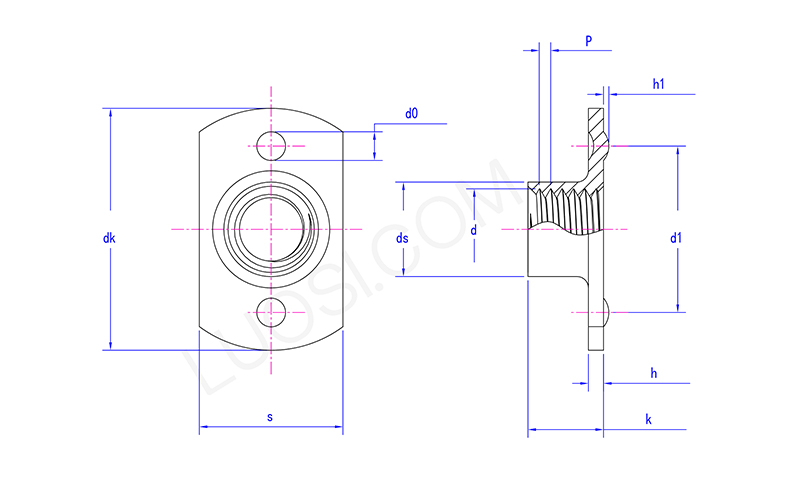
Installation Instructions:
To get the best strength out of load stable T style weld nuts, you need to control the welding settings—current, time, pressure—exactly like specified for the nut’s material and thickness.
It’s really important to get the surface ready right: clean, no oil on the metal. The design itself helps focus the welding current through the projection, but setting up the machine correctly and making sure operators know what they’re doing are key. That’s how you get consistent, strong welds on every T-Style nut.


